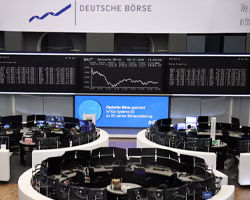Global Markets React to Powell's Rate Cut Signals: US Stocks Soar, Currencies Fluctuate, and BoJ's Policy Shift Boosts Japanese Yen | Daily Market Analysis

Key events:
- Eurozone - Deposit Facility Rate (Mar)
- Eurozone - ECB Interest Rate Decision (Mar)
- USA - Initial Jobless Claims
- Eurozone - ECB Press Conference
- USA - Fed Chair Powell Testifies
On Wednesday, US stocks experienced a rise, particularly in the tech sector, following Federal Reserve Chair Jerome Powell's reiteration that interest rate cuts were imminent later in the year. The Dow Jones Industrial Average saw a gain of 151 points, or 0.4%, while the S&P 500 and NASDAQ Composite rose by 0.8% and 0.9%, respectively.
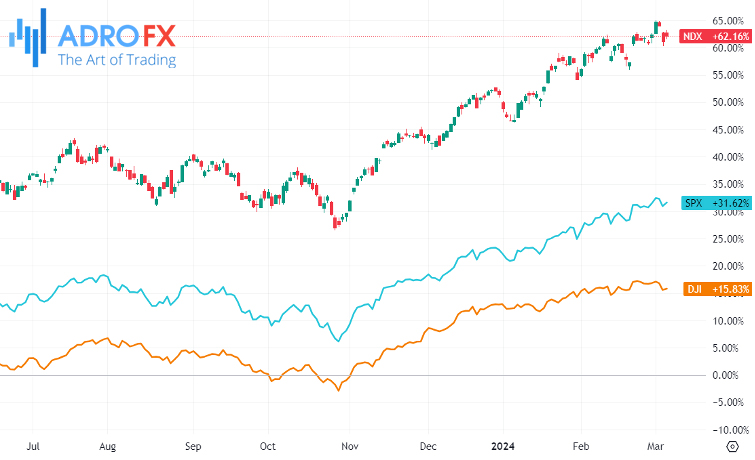
In his prepared remarks before testifying, Powell conveyed that the central bank anticipates a reduction in its benchmark interest rate later in the year. During the subsequent question-and-answer session with members of the House Financial Services Committee, Powell emphasized the need to approach rate cuts "carefully" due to the robust state of the economy and labor market. However, he expressed confidence that the Fed would likely implement rate cuts "sometime this year."
This statement coincides with ongoing data illustrating a robust labor market, with job openings exceeding expectations in January, despite the creation of fewer private jobs than anticipated. Further insights into the employment scenario are expected from the Nonfarm payrolls data scheduled for release on Friday.
Traders, using CME Group's FedWatch tool, estimate a 70% likelihood of the first rate cut occurring in June later this year.
The Canadian Dollar strengthened by half a percent against the US Dollar following the Bank of Canada's decision to maintain rates at 5.0%, in line with market expectations. Fed Chair Jerome Powell's comments further contributed to downward pressure on the Greenback. Powell emphasized the need for additional evidence of inflation reaching 2%, dispelling concerns of a looming US recession.

Canada's upcoming focal point is Friday's labor figures, although market attention is likely to be dominated by the US Nonfarm Payrolls report to conclude the trading week. Analysts anticipate a slight uptick in Canada's Unemployment Rate from 5.7% to 5.8%.
Meanwhile, the GBP/USD experienced a 0.31% climb during the North American session, trading at 1.2746 after rebounding from daily lows of 1.2690. The pair's ascent was fueled by the UK's spring budget announcement and Jerome Powell's testimony, with a potential test of the 1.2800 mark on the horizon.
In the UK, Chancellor of the Exchequer Jeremy Hunt presented the spring budget to the House of Commons, revealing optimistic economic projections. The Office for Budget Responsibility forecasts a 0.8% growth in 2024 and a 1.9% growth next year, surpassing the autumn forecast by 0.5%. Despite a projected increase in headline debt above 100% of GDP, the OBR anticipates a gradual decline to 94.3% by 2028-29.
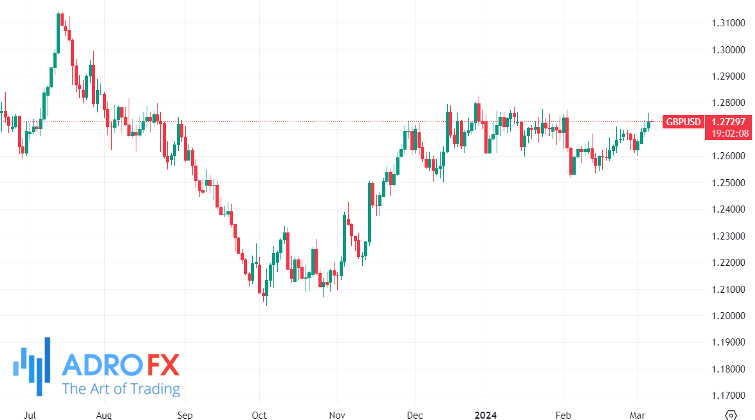
Hunt announced a reduction in employees' National Insurance tax rate from 10% to 8%, while fuel and alcohol duty remained frozen, aligning with pre-announcement rumors.
On the US economic front, the ADP National Employment report for February, reflecting private company hiring, missed estimates but surpassed January's data, indicating a resilient labor market. However, the US JOLTS for January reported 8.863 million job openings, slightly below expectations and a marginal decrease from the previous month's figures.
Post-data release, the GBP/USD surged from the 1.2720s toward the day's highs before retracing some gains. UK Gilts remained relatively unchanged, suggesting a positive reception among investors for the UK's Budget.
The Australian Dollar continues its upward momentum for a second consecutive session on Thursday, primarily driven by the weakening US dollar. This decline in the USD is a result of statements made by Fed Chair Jerome Powell during his testimony before the House Financial Services Committee. Powell indicated the Fed's readiness to reduce borrowing costs "at some point this year," following the presentation of the semi-annual Monetary Policy Report. However, the recent escalation of the regional banking crisis in the United States could potentially prompt Powell to expedite this process.
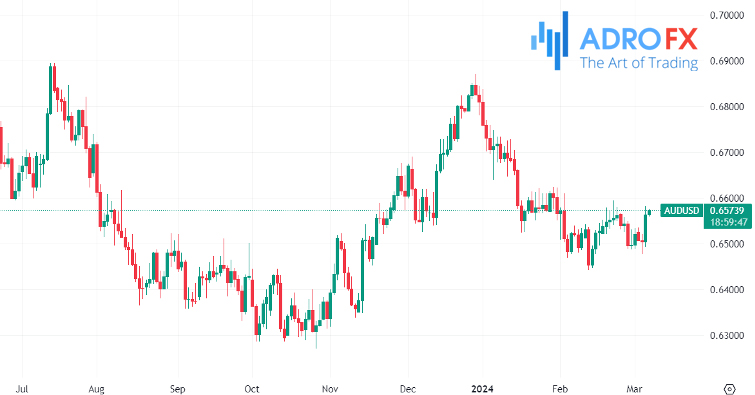
Australia's economic expansion in the fourth quarter was lower than anticipated, as indicated by the latest GDP data released on Wednesday. Additionally, the Trade Balance revealed a reduction in the surplus for February. These developments restrain the gains for the AUD/USD pair and strengthen the case for the Reserve Bank of Australia to adopt an easing bias. Moreover, The Commonwealth Bank of Australia has reiterated its forecast of 75 basis points in rate cuts for this year following the disappointing GDP figures.
In contrast, the Japanese Yen continues its ascent against the American counterpart for the third consecutive day, reaching a nearly four-week high during the Asian session on Thursday. Recent data disclosed that the CPI in Tokyo rebounded from a 22-month low, surpassing the Bank of Japan's 2% target in February. Speculation about the ongoing annual wage negotiations resulting in substantial pay hikes for the second consecutive year and driving demand-driven inflation strengthens expectations for an imminent shift in the BoJ's policy stance, providing support for the JPY.
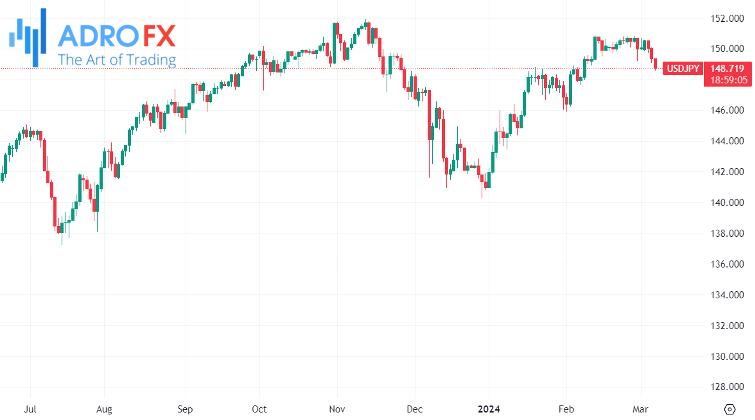
Despite reports suggesting that the BoJ may revise down its assessment of consumption and factory output this month due to signs of weakness in the economy, the bullish sentiment surrounding the JPY remains intact. Additionally, real wages in Japan contracted in January for the 22nd consecutive month, though this has had little impact on the positive outlook for the JPY. Conversely, the US Dollar hovers near its lowest level since early February amid uncertainties about the Federal Reserve's path for rate cuts. This further contributes to the decline of the USD/JPY pair, falling below the 149.00 mark.


